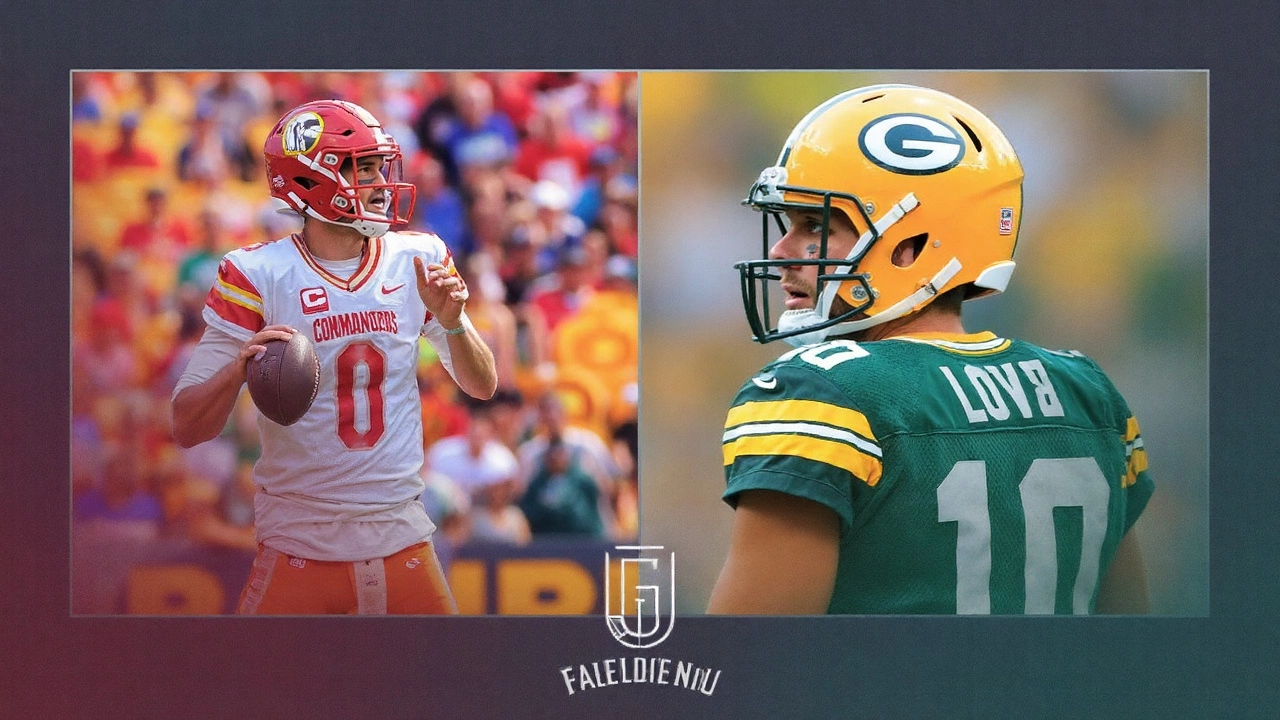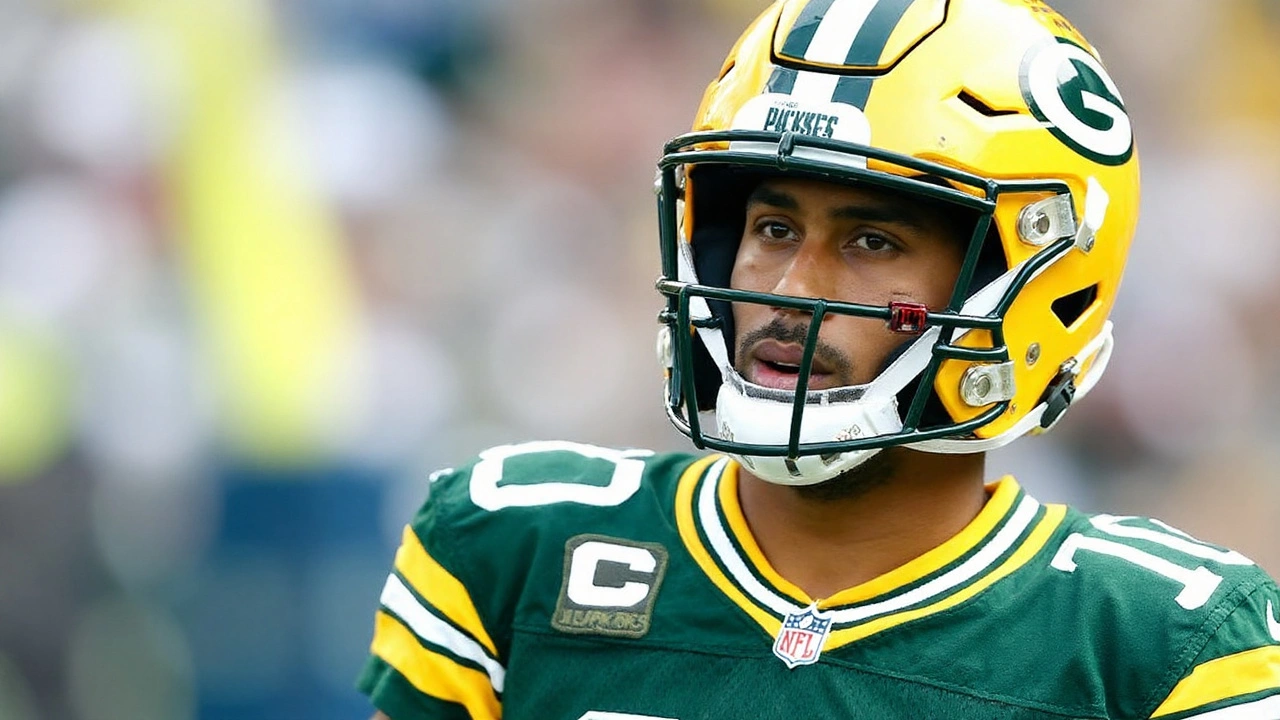Packers seize control early and never let go in 27-18 win over Commanders
The score looks close. The game wasn’t. Green Bay pushed Washington around for most of the night at Lambeau Field, led by a composed Jordan Love, a breakout night from tight end Tucker Kraft, and a defense that shut the door on the run. The result: a 27-18 Thursday night win that felt like a statement from a team that’s now 2-0 and building an identity fast.
Green Bay jumped out 14-0 before Washington caught its breath, then managed the middle rounds with smart, efficient football. The Commanders made it interesting late, trimming the margin to one possession in the fourth, but the Packers controlled pace, field position, and key downs from start to finish. If you’re counting signs of a complete team, this checked a lot of boxes.
Love’s stat line was clean and steady: 292 passing yards and two touchdowns, produced without forcing the issue and without his speed threat Jayden Reed, who exited in the first quarter with a shoulder injury. Love used motion and play-action to find rhythm throws, then hit deeper shots when Washington’s secondary sat flat-footed. His pocket movement was calm—reset, slide, deliver—and his ball placement on in-breakers kept drives alive.
It helped that the run game wasn’t just window dressing. Josh Jacobs was the tone-setter, carrying 23 times for 84 hard yards and a score. Most of those came between the tackles, where Green Bay’s line leaned on duo and inside zone to wear down Washington’s front. The yards per carry won’t pop, but the constant positive gains kept the offense ahead of the sticks and opened the middle of the field for play-action crossers.
The headline, though, belonged to Tucker Kraft. Six catches, 124 yards, and a touchdown for his first 100-yard game. It wasn’t just volume; it was how he did it. Kraft bullied through tackles after the catch, ran through contact on stick and seam routes, and carved up underneath zones when Washington tried to bring pressure. By the second quarter, he looked like Jordan Love’s safety valve and battering ram rolled into one player.
With Reed sidelined, Green Bay needed its depth, and it showed up. Dontayvion Wicks chipped in four catches for 44 yards, working the boundary on quick outs and comebacks. Romeo Doubs handled the physical stuff in traffic. Chris Brooks added steady snaps and kept Washington honest on underneath routes. It wasn’t flashy, but it was professional football: distribute, move the chains, cash in when it’s there.
On the other side, Washington ran into a wall. The Packers’ front blew up the run and turned early downs into a grind. The Commanders finished with just 51 rushing yards on 19 attempts, and living in second-and-long is a bad place to be on the road in primetime. The offseason addition of Micah Parsons only raised the floor for a group that already liked to hunt in waves. Whether he lined up wide or mugged the A-gap, the pressure packages forced quicker throws and cleaner tackling angles for the second level.
That showed up in the numbers: 230 total yards for Washington, 15 first downs, and only five conversions on 16 third-down tries. Discipline mattered, too. Green Bay kept edge contain on quarterback keepers and made Washington earn every yard after contact. The tackling was crisp; the pursuit was relentless. You could feel the air leave the Commanders’ huddle every time a first-down run got stuffed for one or two yards.
To Jayden Daniels’ credit, he didn’t fold. Down big early and stuck behind the chains, the rookie quarterback found pockets of space, extended plays, and pulled the Commanders within a possession in the fourth quarter. He hit a few tight-window throws, picked his spots with his legs, and kept composure when protection leaked. It wasn’t enough to flip the game, but it was enough to avoid a blowout and give his sideline a chance.
Green Bay’s early punch drew blood. Two efficient, scripted drives had Washington on its heels, and the 14-0 lead changed how both sides played. With the Packers leaning into balance and the defense winning on first down, there wasn’t much oxygen left for a comeback. Even when Washington stole a possession back and dialed up tempo, the Packers’ situational football held firm—tackles inbounds, tackling short of the sticks, then a conservative, clock-friendly close.
Head coach Matt LaFleur deserves credit for the blend. He married the run and pass, sprinkled in pre-snap motion to stress leverage, and kept protection sound enough for Love to work through progressions. No wild gambles, no panic after Reed’s injury—just a plan that looked repeatable in cold weather and tight games later in the year.
Defensively, the Packers mixed coverages but always earned the right to rush the passer. When you win the run on first down, the whole call sheet opens up. Green Bay brought simulated pressures, walked linebackers up to the line to mess with protections, then dropped them to clog slants and hitches. Corners kept a lid on explosives, and safeties closed space when Daniels tried to attack the seam. It was the kind of complementary defense that turns 27 points into an uncatchable number.
Special teams did its part by keeping the field tilted. No major busts, clean operation, and punts that forced Washington to work long fields. It’s easy to overlook that phase on nights like this, but stacking routine wins—fair catches, touchbacks, kick coverage inside the 25—adds up when your defense is feasting on long down-and-distance.
Injuries are the cloud on any big night, and Reed’s shoulder will be the item to watch. The Packers leaned on depth and tight-end usage after he went out, which softens the blow, but Reed’s speed changes spacing. If he misses time, expect LaFleur to lean a little more on condensed formations, bunch sets, and play-action glances to keep windows open for Doubs, Wicks, and Kraft.
Here’s how the game tilted, in plain numbers and moments that matter:
- Start fast: Green Bay opened 14-0 and never trailed. That early gap forced Washington into pass-heavy scripts and long third downs.
- Balance beats blitz: 404 total yards for Green Bay, fueled by a steady run game that kept Love in favorable passing situations.
- Third downs tell the truth: Washington went 5-for-16. Green Bay kept routes in front and tackled short of the marker all night.
- Run defense wins games: The Commanders managed just 51 rushing yards on 19 attempts. That’s a formula for frustration on the road.
- New star on the rise: Kraft’s first 100-yard receiving game showcased yards after contact and trust from his quarterback.
Love’s development is the quiet headline humming underneath everything else. He looked comfortable changing protections, he didn’t drift into pressure, and he consistently threw receivers open between defenders. Most importantly, he avoided the one or two loose throws that can turn a comfortable night into a scramble.
Kraft’s emergence gives this offense a different gear. When your tight end can threaten the seam and break tackles in the flat, defenses can’t just squeeze perimeter receivers. It becomes a spacing problem, and that plays straight into LaFleur’s hands. Expect more play-action boot, more TE screens, and more middle-of-the-field work that punishes linebackers who bite hard on run fakes.
The offensive line set the tone with a physical night in the run game. Even when runs didn’t explode, they dented the front and forced safeties to trigger. By the second half, Washington had to allocate help in the box, and that’s when Love found Kraft on a handful of back-breaking chunk plays. That’s the definition of complementary ball—one phase setting up the next, rinse and repeat.
Washington’s path to a comeback was narrow: hit explosives, steal a possession, win a short field, and protect Daniels long enough to stress the seams. The Packers didn’t allow any of it in sequence. When the Commanders found a rhythm, Green Bay tightened in the red zone. When they threatened field position, a timely tackle or a conservative checkdown kept the clock moving. There was never a series where both speed and space favored Washington.
For all the talk about star power, this was a depth and discipline win. Green Bay’s rotations stayed fresh on defense, the tackling was sound, and the offense spread touches without chasing hero plays. That’s the kind of profile that travels—and the kind that wins ugly games in bad weather.
One last note on identity: early down success on defense plus a trustworthy run game on offense is the NFL’s simplest recipe for January football. Two weeks in, Green Bay is cooking with it. It’s early, sure, but the bones look strong.
For Washington, the film won’t be fun, but it will be useful. They’ll need to find more on first down, lean into quick-game timing, and get the run game out of neutral. Daniels showed enough poise to keep building around him. More manageable third downs, a little tempo to change the picture, and a renewed commitment to yards after contact would help immediately.

What this says about both teams—and what’s next
Two games don’t crown anyone, but they do reveal tendencies. Green Bay looks balanced, physical, and flexible. The offense can win left- or right-handed, the defense is built to take away the run and force you into late-down stress, and the overall operation feels stable. That’s the profile of a team that can stack wins while it figures out its ceiling.
Washington leaves 1-1 with a reality check and a positive: the gap is clear, and the quarterback can handle tough nights without unraveling. If the line tightens up and the run game gains traction, the offense will look a lot different than it did in the first seven possessions at Lambeau.
For now, the headline sits where it should: Packers vs Commanders was not a toss-up. Green Bay dictated the terms, handled adversity after losing a key wideout, and made primetime feel like a routine home shift. The tape will travel. So will the confidence.
